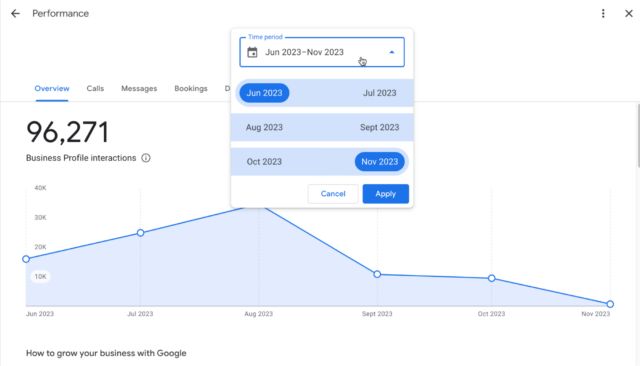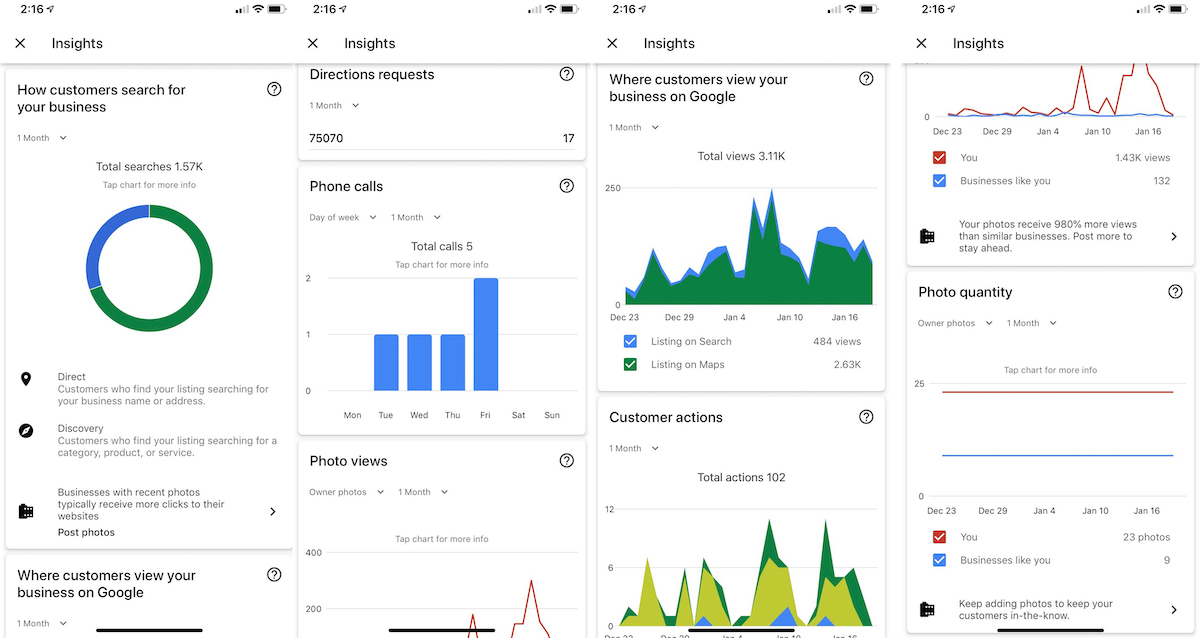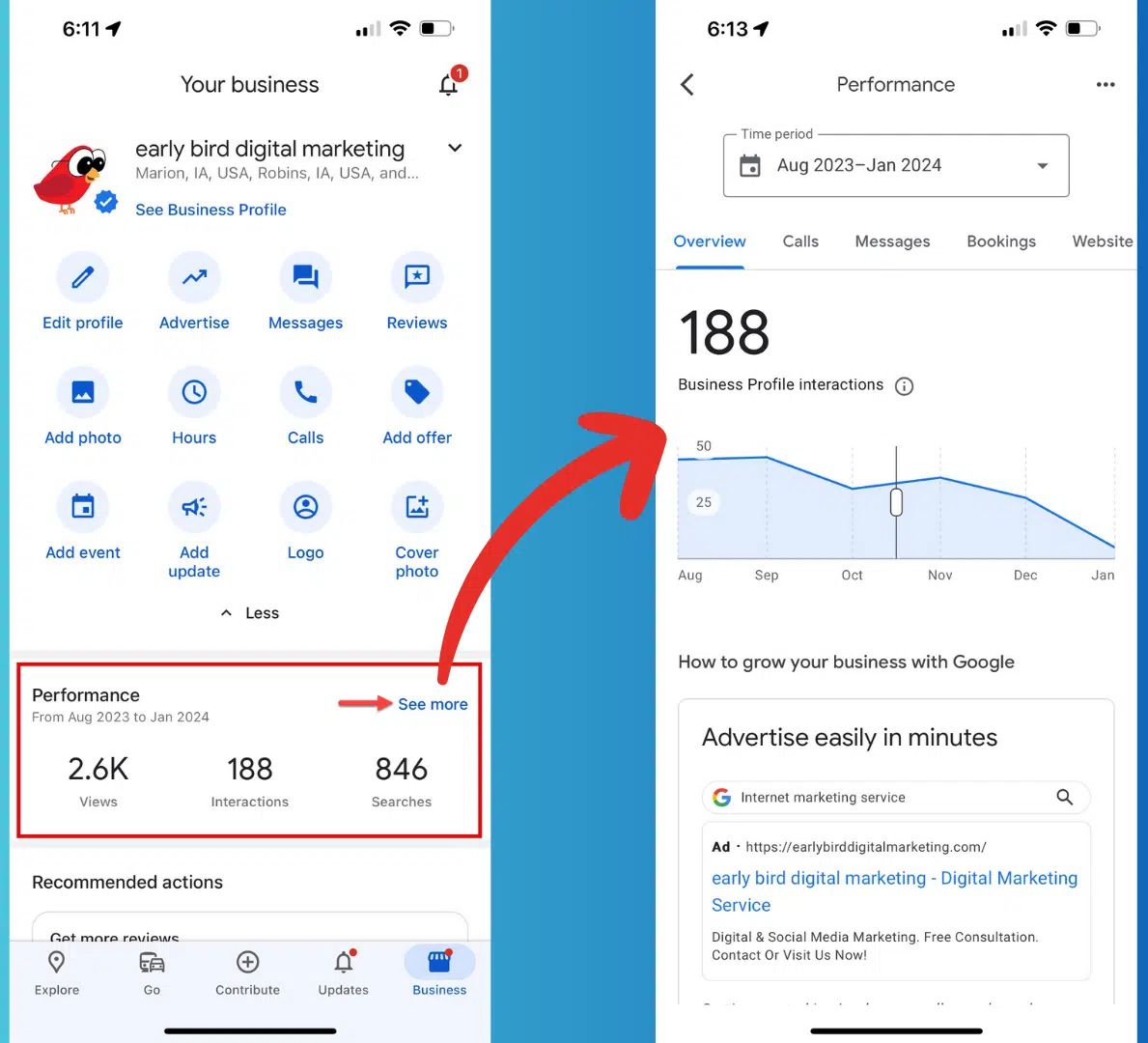How To Use Google Business Profile Insights

Last Updated on 27 September 2025 by Dorian Menard
Understanding your Google Business Profile (GBP) performance is the fastest way to get more local customers through your door. As an Australian business owner, you need to know which clicks turn into clients and which ones are just noise.
The data is all there, but Google has changed how you access and interpret it, moving from the old ‘Insights’ tab to a new ‘Performance’ report that lives directly in Search and Maps.
This guide gives you a straightforward path to finding the numbers that matter and using them to make smart decisions that grow your business.
Here’s what you need to know:
- Find Your Data: Performance reports are now found directly in Google Search and Maps, not the old GBP dashboard.
- Key Metrics: Focus on Interactions (calls, clicks, messages), Search Queries (what people typed to find you), and how people discovered you (Direct vs. Discovery).
- Actionable Strategy: Use the search query data to update your business description and services to match exactly what your customers are looking for.
- Troubleshooting: If your data isn’t showing, your profile might be too new, may have been suspended, or simply hasn’t had enough traffic yet.
How to Use Google Business Profile Insights to Get More Customers
You’ve probably noticed that getting clear data from your Google Business Profile isn’t as simple as it once was. In my role as the founder of Search Scope, a Perth-based SEO agency, I’ve seen firsthand how these changes have left many business owners confused. The old dashboard is gone for most, and the metrics have changed.
But the core principle remains the same. This data tells you the story of how customers find and interact with you online.

Where Do I Find My Google Business Profile Performance Report?
First, let’s clear up the biggest point of confusion. The platform previously known as “Google My Business” is now “Google Business Profile,” and the “Insights” tab has been replaced by the “Performance” report.
You no longer manage your profile from the old `business.google.com` dashboard. Instead, you access everything directly from Google Search or Google Maps.
Accessing Performance on a Desktop
To see your business performance data on a desktop, you just need to search for your business name on Google. Make sure you’re logged into the Google account associated with your profile.
You’ll see a management panel at the top of the search results. Simply click the “Performance” button to view your data.
Accessing Performance on a Mobile Device
You can get the same information on your phone through the Google Maps app. It’s designed for quick checks when you’re not at your desk.
Open the Google Maps app and tap on your profile picture or initial to select your Business Profile. From there, you’ll see an option to view your profile’s performance.
What Do the Key Performance Metrics Actually Mean?
The new Performance report focuses on the interactions that lead to actual business. It removes some of the vanity metrics from the old system to give you a clearer picture.
How Customers Found You: Search and Map Views
This section tells you whether customers are seeing you on Google Search or Google Maps. It also breaks down how they searched for you.
- Direct Searches: Someone typed in your exact business name or address. This is a great indicator of brand recognition and repeat business.
- Discovery Searches: A customer searched for a product or service you offer, and your profile appeared. High numbers here mean your local SEO is working well.
- Branded Searches: This is when someone searches for your brand or a brand related to your business.
A healthy mix is ideal. If your discovery searches are low, it might mean you need to work on your keyword targeting and optimising your business categories.

Search Queries: The Keywords Customers Are Using
This is arguably the most valuable part of the new report. It shows you a list of the actual search terms people typed into Google to find your business.
This data is pure gold. It tells you exactly what your customers want and the language they use to ask for it.
User Actions: Calls, Clicks, Directions, and Messages
These metrics measure high-intent actions from potential customers. They are direct indicators of engagement.
- Phone Calls: Tracks how many people called your business directly from your GBP listing.
- Website Clicks: Shows the number of clicks through to your website. This helps you measure how well your profile is driving web traffic.
- Direction Requests: Measures how many people asked Google Maps for directions to your location, indicating strong purchase intent.
- Messages: Tracks the number of messages initiated from your profile, a growing contact method for many customers.
How to Use Your GBP Data for Real Business Growth
Data is useless unless you act on it. You can check out our comprehensive guide on optimisation here, but these are the key actions you should take based on your performance report.
Use Search Queries to Refine Your Profile
Look at your top search queries. Are people searching for “emergency plumber Perth” but your business description only says “plumbing services”?
You should update your description, services, and even create Google Posts that include the exact keywords your customers are using. This aligns your profile with user intent and improves your ranking for those terms.
Analyse Seasonal Trends to Plan Promotions
Keep an eye on your performance data over several months. You’ll likely spot seasonal patterns.
If you’re a retailer and see a spike in searches for “gift baskets” every November, plan your Christmas promotions to launch in October. You can adjust your business hours, create special offers, and schedule Google Posts to capture that demand.

Boost Engagement With High-Quality Photos
Don’t underestimate the power of visuals. According to research conducted for Google, businesses with photos on their profiles receive 42% more requests for driving directions and 35% more clicks through to their websites.
Your photos should be recent and high-quality. Add new ones every quarter to show your business is active and to reflect any changes.
| Content Type | Purpose | Best Practices |
|---|---|---|
| Product Photos | Showcase what you sell | Update monthly with new items or seasonal offers. |
| Interior/Exterior Photos | Build trust and familiarity | Refresh quarterly or after any renovations. |
| Team Photos | Add a human element | Update during team events or when new staff join. |
“Regular review of Insights data is essential for identifying trends and patterns, which should inform your marketing and business strategies. For instance, if users frequently request directions to your location, this might indicate a need for clearer signage or improved location information in your profile.”
These optimisation tasks are a core part of the Google Business Profile optimisation and maintenance services we provide for our clients.
Why Are My Google Business Profile Insights Not Showing?
Sometimes you might log in and see no data. Don’t panic, as there are a few common reasons for this.
- Your profile is new. It can take some time for a new or recently verified profile to gather enough data to display.
- Your profile has been suspended. If your profile violates Google’s guidelines, it may be suspended, and performance data will be unavailable.
- There isn’t enough data. For very niche businesses or those in low-population areas, there might not be enough search activity to generate a report.
When to Get Expert Help
Monitoring these metrics is key to making smart decisions. The data tells you exactly how customers find you and what they do next.
| Metric Type | What to Watch | Why It Matters |
|---|---|---|
| Search Performance | Top search queries used by customers | Reveals customer intent and the exact language they use. |
| Visibility | Search views vs. map views | Tells you where your business gets the most visibility. |
| Customer Actions | Calls, website clicks, and direction requests | Tracks high-intent actions that lead to sales. |
If you find it difficult to turn this data into a clear strategy, professional assistance can make a significant difference.
Why Expert Assistance Can Help You Succeed
An expert can translate complex data into a simple, actionable plan. At Search Scope, we specialise in helping Australian businesses grow with our proven local SEO services.
Since launching in 2021, our agency has generated over $3.5M in client revenue and delivered more than 25,000 qualified leads. We focus on optimising Google Business Profiles to drive real results, not just vanity metrics.
Making the most of your GBP Performance report requires consistent monitoring and a willingness to adapt. Let the data guide your decisions and make it a core part of your local growth strategy.
Frequently Asked Questions About Google Business Profile Insights
1. How far back does the Google Business Profile Performance report go?
The report shows data for up to the last 6 months. You can select custom date ranges within that period to analyse performance over specific times.
2. Can I see who viewed my Google Business Profile?
No, Google does not provide data on individual users who have viewed your profile. All data is aggregated and anonymised to protect user privacy.
3. How often should I check my GBP Performance report?
It’s good practice to check your report at least once a month to monitor trends. If you’re running a specific campaign or have made significant changes, you might check it more frequently.
4. What is the difference between Search Views and Map Views?
Search Views are impressions your profile received in standard Google search results. Map Views are impressions received when users were on Google Maps, which often indicates a higher intent to visit.
5. Why did Google remove some of the old Insights metrics?
Google updated its reporting to focus on more meaningful engagement metrics like calls, messages, and direction requests. Metrics like photo views were removed to simplify the report and highlight actions that more directly lead to business.